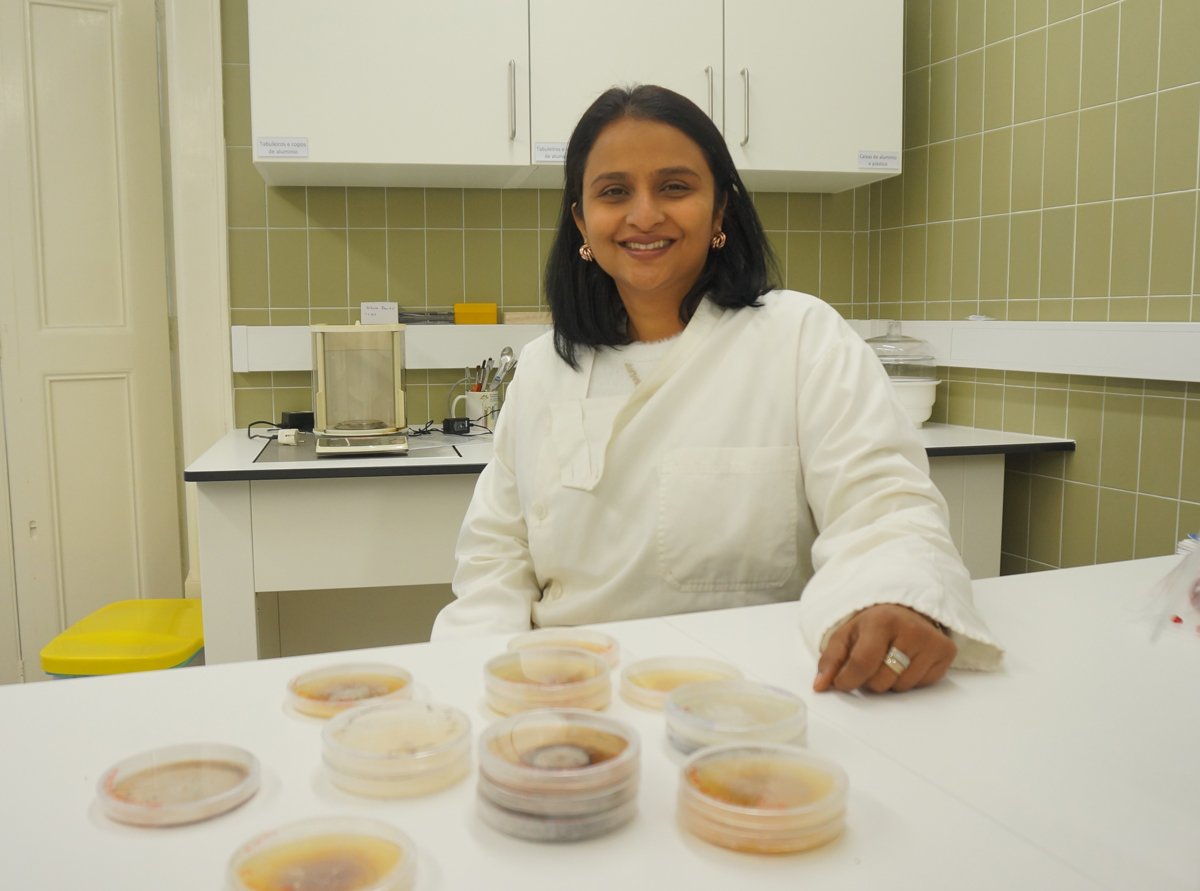A team of scientists from the University of Coimbra (UC), in collaboration with the University of Aveiro (UA) and Konkuk University (South Korea), identified the possible impacts caused by low concentrations of nanoplastics in freshwater ecosystems and concluded that Environmentally relevant concentrations of nanoplastics pose a major risk to the basal trophic levels of small stream food chains.
To reach this conclusion, the study team, already published in the Journal of Hazardous Materials, carried out a laboratory test “with the lowest concentrations of nanoplastics ever tested, up to 25 μg/L [micrograms per litre], with two sizes (100 and 1000 nm [nanometers]). The objective was to evaluate the impacts of nanoplastics on activity (decomposition of organic matter), reproduction rate and changes in the aquatic hyphomycetes [fungi] community. In addition, we verified changes in the nutritional quality of leaves exposed to nanoplastics. These leaves were then supplied to a species of stream invertebrates, in order to assess possible consequences on their feeding behaviour“, explains Seena Sahadevan, a researcher at the Center for Marine and Environmental Sciences (MARE) of the Faculty of Science and Technology of the University of Coimbra (FCTUC) and first author of the scientific article.
In small streams, the decomposition of organic matter is a crucial process, responsible for the transfer of energy and nutrients between the different trophic levels of the food chain. Aquatic hyphomycetes are the main mediators of this process. These fungi are able to modify the recalcitrant components of the leaf, thus improving its palatability and nutritional quality for invertebrate consumption.
According to the MARE researcher, the results obtained indicate that «the decomposition, reproduction and abundance of fungi are significantly affected by low concentrations and size of nanoplastics; smaller particles show greater toxicity.» Interestingly, underlines Seena Sahadevan, «only the smallest nanoplastics impacted the nutritional quality of the leaves, increasing the amount of polyunsaturated fatty acids. There were no visible changes in invertebrate feeding rates, but we observed lethargic behaviour in animals fed leaves exposed to higher concentrations, indicating possible contamination.”
Nanoplastics are plastic fragments smaller than 1000 nm (nanometers) – approximately the size of a virus – commonly used by pharmaceutical, cosmetic and cleaning products industries, and may also be derived from the degradation of macroplastics that we use in our daily lives. day.
The main concern with these nanometric plastic fragments is their high capacity for interaction and reaction with other molecules and organisms present in the environment. Currently, the vast majority of studies that address “the consequences of micro and nanoplastics in nature are carried out in marine environments. However, it is important to note that 1.15 – 2.41 million tons of plastics present in the oceans are transported through rivers.
Overall, this study provides «new insights into the major risks that nanoplastics pose for the proper functioning of freshwater ecosystems», summarizes Seena Sahadevan.
The scientific article is available: here.
Follow us on Facebook, Twitter, Instagram, Youtube and TikTok and see the exclusive content for social networks.



